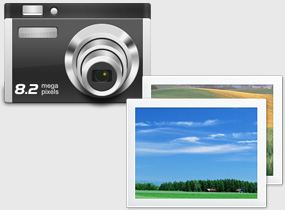 As the chemicals used in traditional photographs are sensitive to humid air and sunlight and ultimately led to these photos getting damaged, people started to switch over to digital photography. Digital images are easy to store for a longer period of time without any damage. The most important advantage of digital images is that we can edit them according to our needs and save those changes easily. Even though it is an exciting utility, bad editing can make your digital image look unreal and lead to disastrous outcomes. Suppose you are placing badly edited images of jewelry in your jewelry store website. People will think you are faking the products and won’t purchase them. That’s why it is very important to make digital image editing authentic.
As the chemicals used in traditional photographs are sensitive to humid air and sunlight and ultimately led to these photos getting damaged, people started to switch over to digital photography. Digital images are easy to store for a longer period of time without any damage. The most important advantage of digital images is that we can edit them according to our needs and save those changes easily. Even though it is an exciting utility, bad editing can make your digital image look unreal and lead to disastrous outcomes. Suppose you are placing badly edited images of jewelry in your jewelry store website. People will think you are faking the products and won’t purchase them. That’s why it is very important to make digital image editing authentic.
Bad editing may include improper tonal range (imbalance between the amount of white and dark in your image), overexposing (whitening)/underexposing (darkening) of image or over saturation, and unnatural coloring. So, how can we avoid such issues? Here are some effective methods.
- Excessive pixelated edits can make your image look artificial. You can use smoothing tool to avoid this effect. Otherwise, you can make the pixels to appear smaller by adjusting the pixelation scale of the image. If you have added any objects to the image, you can use either smoothing or blurring tool all over their edges to blend into relevant surroundings. It is better to use this effect very moderately to avoid objects appearing cluttered or others noticing their false edges.
- While adding an object to your image, use lighting effects to blend that object with the image. Adjust the red, blue and green colors of the image independently to balance the color levels of the object and image so that you can get a natural-looking effect. You can use image editing software on some portions of the image for better lighting effects. Find out where the lighting in the image hit to match the lighting effect on the new object and add a shadow with appropriate size under the image. Ensure that the shadow does not make any black smudge on the photo.
- Add color or texture effect by hand rather than by using any editing tool. You can thus adjust the effect on various portions of the image and make it look natural instead of appearing as colored or textual film simply placed on the top of the image. Define the edges of objects in the image to determine where you can apply color or textual effect.
- Avoid over-editing and eliminate only those elements which harm the look of the image and are the results of photographic procedures.
It is imperative to remain cautious and highly knowledgeable for implementing these methods successfully. The best option is to get expert help from a professional digital image processing company for this purpose. Such a company can offer image editing services such as photo clipping, photo retouching, and image resizing along with three levels of quality checks to provide high quality image processing solutions.

